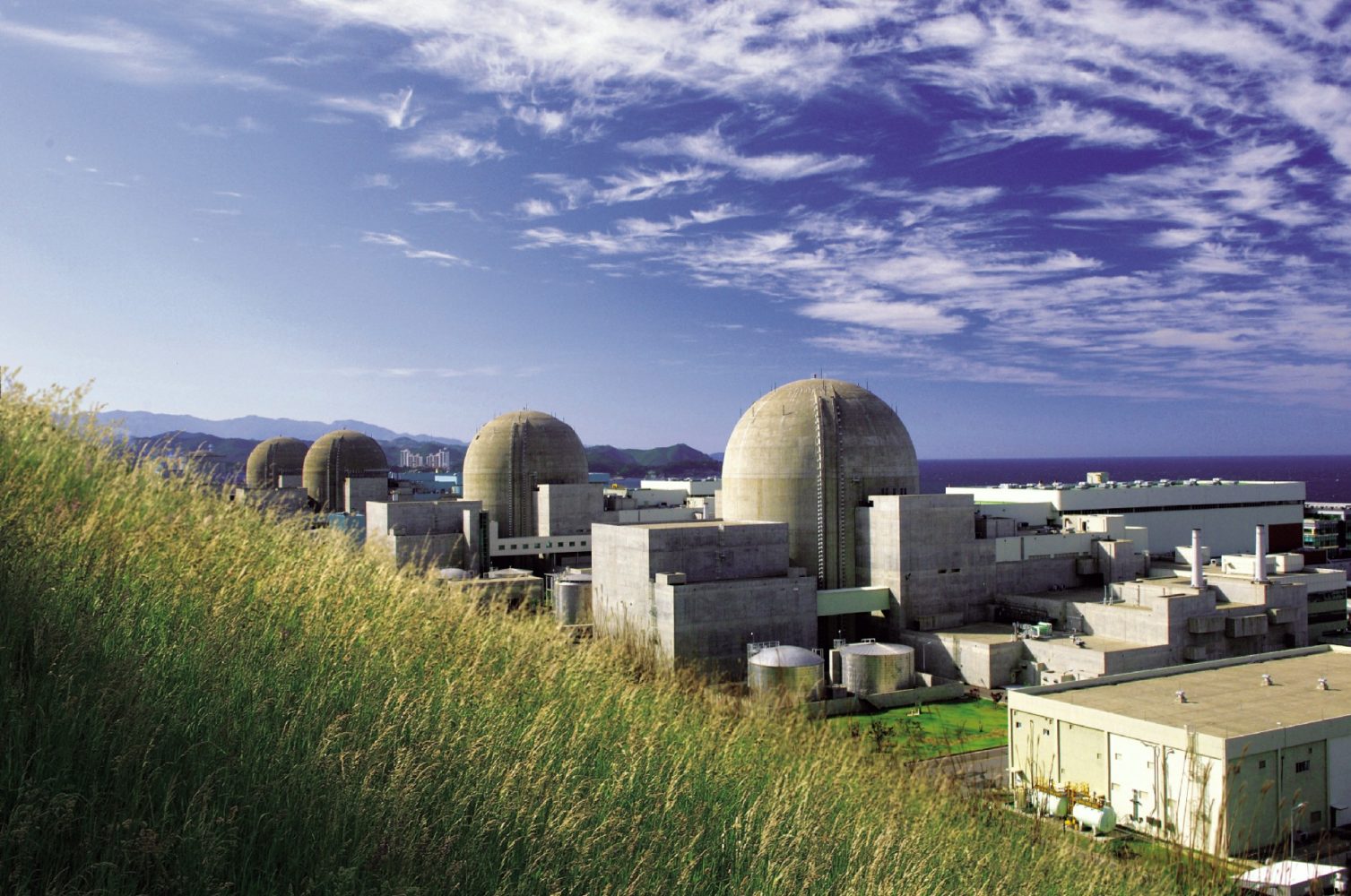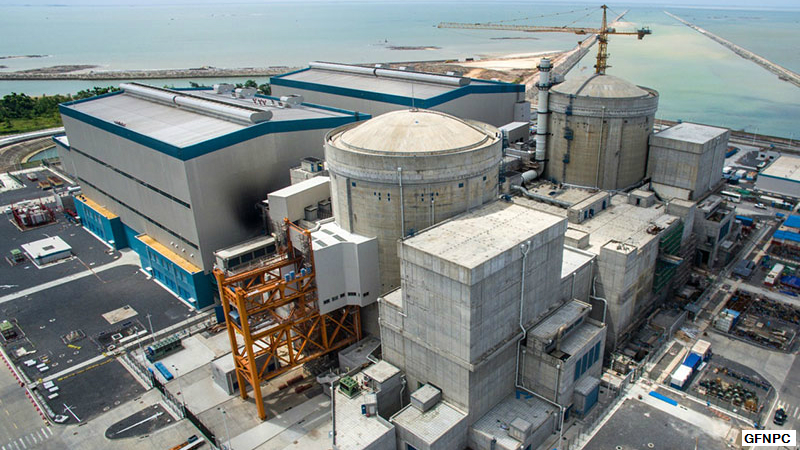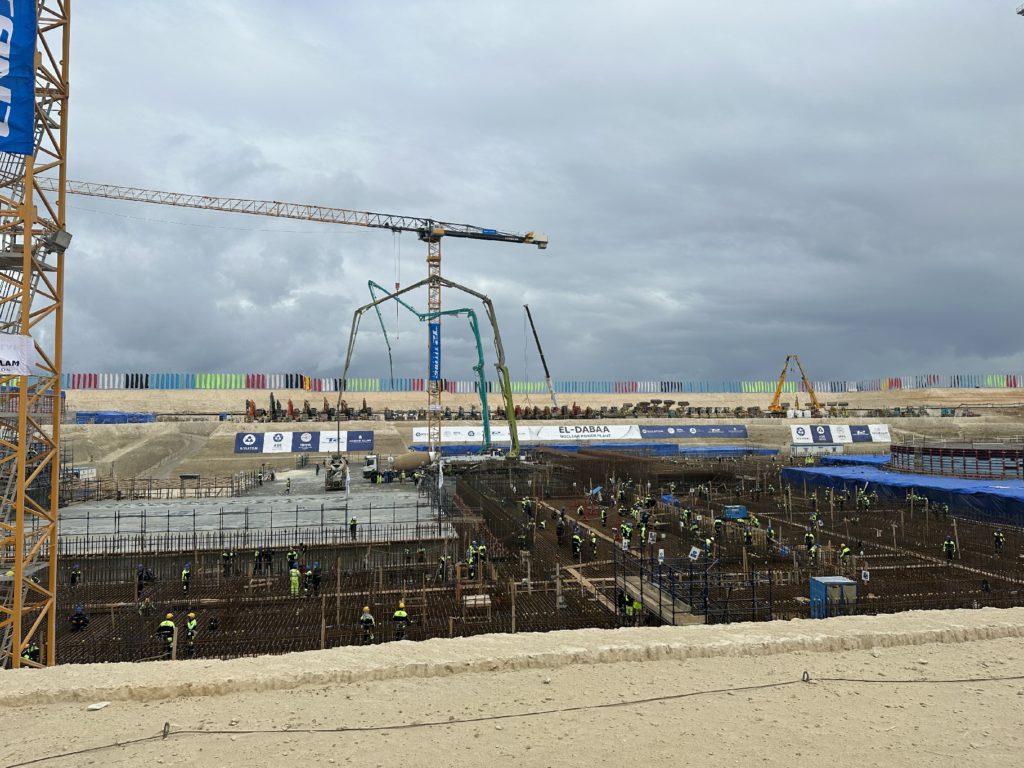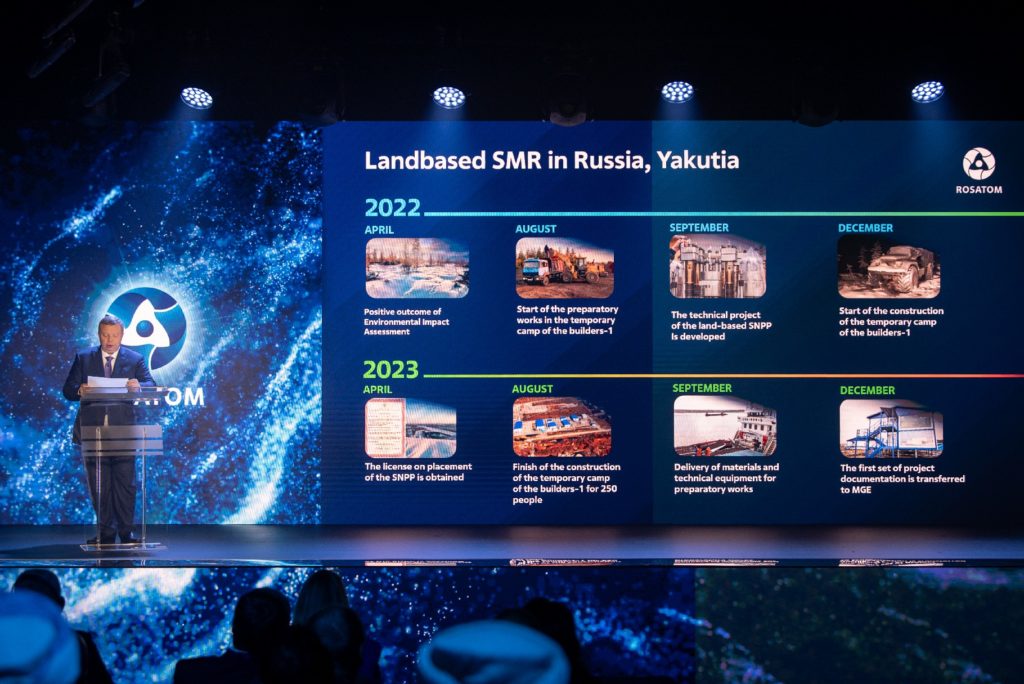
Russian Atoms Join European Nuclear
back to contentsThe World Nuclear Performance Report 2024 produced by the World Nuclear Association considers the state of affairs in the global nuclear industry as at 2023. Europe, whose nuclear generation has been in decline for many years, turned into a leader in terms of new nuclear connections. Two reactors came online in 2023, one at Slovakia’s Mochovce NPP and the other in Belarus, both of Russian design. On the whole, the nuclear power industry was actually treading water by each key indicator in 2023.
Generation and operation
Nuclear reactors around the world generated 2,602 TWh of electricity last year, up 58 TWh from 2,544 TWh in 2022, but down 51 TWh from 2,653 TWh in 2021. France was the major contribution to last year’s 58 TWh recovery, having increased its electricity generation by 42 TWh and thus offsetting about half of the reduction in output that was caused by extended outages of the French reactors.
In Asia, generation also continued to grow strongly in 2023. Total generation in other regions was broadly similar to the previous year.
The total number of reactors in operation remained unchanged from 2022, standing at 437, but their installed capacity decreased by 1 GW over the year to 392 GW. Some reactors, such as in Japan and India, have an operable status but do not generate electricity. Overall, the capacity of reactors that produced electricity in 2023 was 368 GW, up 3 GW on the previous year.
Capacity factors in 2023 were broadly in line with those achieved in the previous five years. The global average capacity factor in 2023 was 81.5 % (vs. 80.4 % in 2022), remaining approximately at the same level since 2000. “There has been a steady improvement in average capacity factors in each decade since the 1970s. The high-capacity factors achieved in the 2010s have continued from 2020 onwards,” the report says. Commercial fast neutron reactors and light-water graphite reactors (the both reactor types are operated in Russia only) improved their performance. For instance, the capacity factor for LWGRs surpassed 80 % in 2023.
There is no overall age-related decline in nuclear reactor performance, according to the report. It was found that the reactors younger than 20 years of operation and those exceeding 45 years of operation have higher than average capacity factors. By contrast, the ‘medium age’ reactors demonstrated lower than average capacity factors.
Grid connections
Five reactors were connected to the grid in 2023, one in each of China (Fangchenggang 3), South Korea (Shin-Hanul 2), the US (Vogtle 3), Belarus (Ostrovets 2) and Slovakia (Mochovce 3). The reactors at the Mochovce and Ostrovets plants are of Russian design. Mochovce Unit 3 with a VVER 440 reactor was brought online on January 31, 2023. Reactors of this type were among the most frequently built nuclear generation facilities in Eastern Europe in the last century. Its design and performance proved so efficient that Slovakia considered it a good thing for the country to finish the construction of Mochovce 3 and 4, which was suspended back in 1990. Construction works resumed in 2015. Unit 4 is currently being prepared for first power.
Unit 2 of the Belarusian NPP was brought to first power on May 13, 2023. This unit, like the first one, operates a Generation III+ VVER 1200 reactor, and the two of them are the first units with VVER 1200 reactors built outside Russia. Electricity they produce accounted for 30 % of total power consumption in Belarus in 2023. To date, this share has reached 40 %. “In December 2023, the energy minister Viktor Karankevich said that the country was considering building either a second nuclear power plant or a third unit at Ostrovets. In October Russia’s TVEL and the Belarusian Organization for Radioactive Waste Management entered into an agreement to develop infrastructure for radioactive waste in Belarus, and to train personnel for the operation of a near-surface waste disposal facility,” the report says.
 Reactors under construction
Reactors under construction
In 2023, construction started on six reactors. One of them, El Dabaa Unit 3, is being built by Rosatom. Another five reactors will be built in China.
El Dabaa Nuclear Power Plant will have four VVER 1200 reactors. The site is situated 140 km away from Alexandria, on the Mediterranean coast. Construction works are currently underway at each of the four reactor units (first concrete at Unit 4 was poured on January 4, 2024). In late August, Rosatom Director General Alexey Likhachev and Egyptian Prime Minister Mostafa Madbouly discussed the progress of the project. El Dabaa NPP is of special importance for the country, Mostafa Madbouly emphasized in the discussion, as it is included in the national energy diversification program, which provides for broader use of new and renewable energy sources by 2030. The Egyptian Prime Minister reiterated the commitment of Egypt’s government agencies to supporting the project, given its importance in providing clean electricity to the country.
 According to the WNA, the total number of units under construction reached 61. Rosatom is a global leader in terms of reactor units under construction abroad.
According to the WNA, the total number of units under construction reached 61. Rosatom is a global leader in terms of reactor units under construction abroad.
In Bangladesh, Rosatom is building the Rooppur Nuclear Power Plant with two VVER 1200 reactors. The construction of Unit 1 started in November 2017; first concrete for Unit 2 was poured in July 2018.
Once completed, the two reactors of the nuclear power plant are expected to provide about 9 % of the country’s electricity. Nuclear fuel for the first load was delivered to Bangladesh in October 2023, which officially made the Rooppur NPP a nuclear facility. Pre-license training of the Rooppur personnel was finished in 2024. At present, construction works on the site are fully on schedule. Unit 1 is expected to be put in operation in 2025.
In China, Rosatom is currently involved in the construction of Units 7 and 8 at the Tianwan NPP and Units 3 and 4 at the Xudabao NPP. These four units are being built to the Russian design and will feature VVER 1200 reactors. Rosatom’s scope of supply includes engineering design, technical documents, equipment for the nuclear island, and related services. Four units with VVER 1000 reactors built earlier at the Tianwan NPP are in operation and supplying electricity to China.
In Hungary, Rosatom is preparing for the first concrete pouring at Paks II. A construction license for two power units with VVER 1200 reactors was issued by the Hungarian Atomic Energy Authority (HAEA) in August 2022. In April 2023, the Hungarian government confirmed its intention to continue the project. In May of the same year, the European Union approved an amended contract with Rosatom. Preparatory earthworks on the site began in July 2023. First concrete for Paks II Unit 1 is expected to be poured by the end of this year.
In India, Rosatom is building four power units (Units 3–6) at the Kudankulam NPP. These units will be equipped with VVER 1000 reactors. The first two power units of the Kudankulam NPP were connected to the grid in 2013 and 2016, respectively.
In Turkey, Rosatom is building a nuclear power plant in the south of the country, 120 km to the southwest of Mersin. The plant will have four VVER 1200 reactors. Construction of Unit 4 started in August 2023. The first unit entered a pre-commissioning stage in April 2024. All the four reactors are expected to be commissioned in the period from 2025 till 2028.
Finally, Rosatom is also building four power units in Russia. These include two VVER 1200 reactors at the Kursk NPP, one VVER 1200 reactor in the Leningrad Region (first concrete was poured in March 2024), and a lead-cooled fast neutron reactor BREST-OD 300 in Seversk. The report specifically mentions that Russia completed the first refueling of the world’s first floating nuclear power plant, Akademik Lomonosov, in November 2023.
Besides, in June 2023, Rosatom signed an agreement with TSS Group to build several floating power units with a capacity of at least 100 MW and a service life of up to 60 years. The company plans to sell electricity from aboard the floating units in the Middle East, Southeast Asia and Africa.
Reactor shutdowns
Five reactors were permanently shut down in 2023. Germany led the process, having shut down its three last operating reactors at the Emsland, Isar and Neckarwestheim nuclear power plants. Belgium and China shut down one power unit each (Tihange 2 in Belgium and Kuosheng 2 in Taiwan). However, with five reactors grid-connected in 2023, there was no net change in the number of operable reactors worldwide. The diagram of grid connections and shutdowns shows no clear trend, whether positive or negative.
Plans for the future
Political support for nuclear is growing, WNA Director General Sama Bilbao y León writes in the concluding remarks to the report. At the COP28 climate change conference in Dubai in December 2023, leaders from 25 governments signed a ministerial declaration committing to the tripling of global nuclear energy capacity to achieve net zero by 2050. A similar statement, the Net Zero Nuclear Industry Pledge, was signed by over 120 companies, Rosatom included.
“[…] a significant increase in new nuclear construction is necessary if the tripling goal is to be achieved. This level of construction depends on the nuclear industry rising above the financing, supply chain and regulatory challenges faced by new projects, particularly in the Western world,” Sama Bilbao y León noted.
 The World Nuclear Association expects more governments and companies to sign the declaration to triple global nuclear energy capacity. “Additionally, we anticipate increased collaboration with other industries. Now is the time for the nuclear industry to capitalize on this momentum and deliver the full potential of nuclear energy for people and planet,” the WNA Director General concluded.
The World Nuclear Association expects more governments and companies to sign the declaration to triple global nuclear energy capacity. “Additionally, we anticipate increased collaboration with other industries. Now is the time for the nuclear industry to capitalize on this momentum and deliver the full potential of nuclear energy for people and planet,” the WNA Director General concluded.




